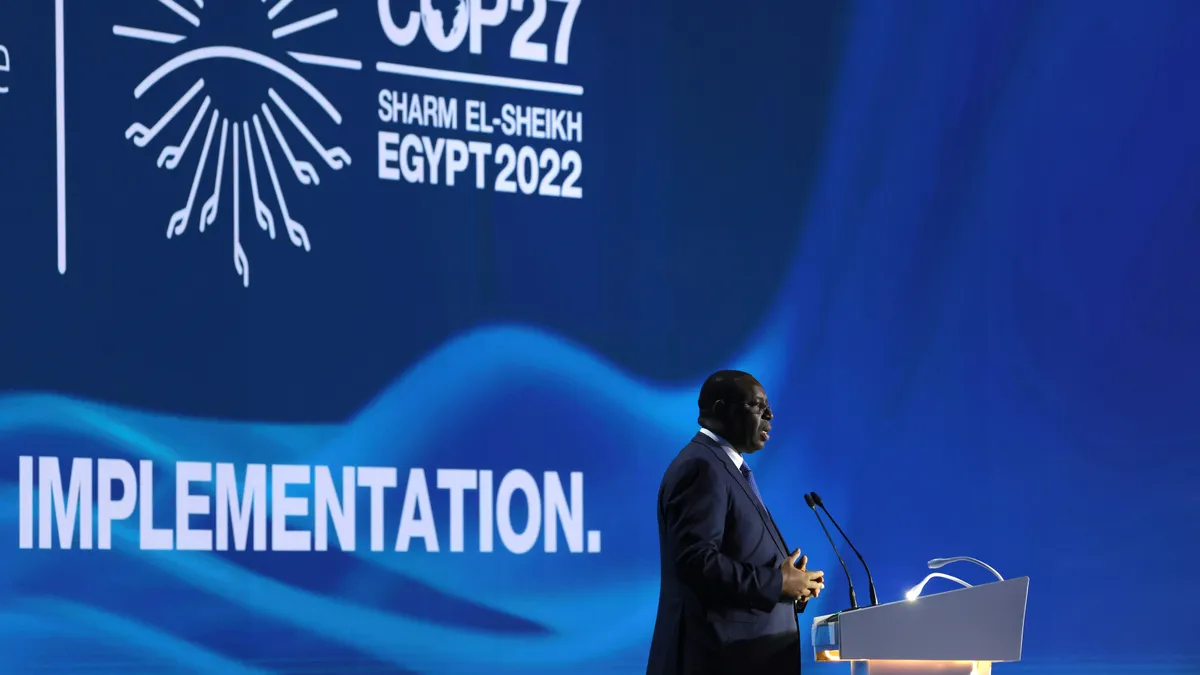Storms, wildfires, energy disruptions and inflation are among the stressors facing government leaders as COP27, the 2022 United Nations Climate Change Conference, gets underway in Sharm el-Sheikh, Egypt.
“Cities are really feeling vulnerable around these things. There’s a lot of heaviness going into this COP; a lot of fear,” said first-time COP participant Heather Rosenberg, Americas resilience discipline leader at engineering and consulting firm Arup, in an interview ahead of the conference.
And when considering economic and geopolitical unrest, “climate is a threat multiplier,” said World Resources Institute President and CEO Ani Dasgupta during a press briefing last week.
In recent years, these UN conferences, or ‘COPs’ — referring to Conference of the Parties of the United Nations Framework Convention on Climate Change — have been a forum to set carbon reduction targets and plans. This year, as government leaders and a range of other climate partners from around the world gather, their focus is on implementation. The summit’s key goals surround climate mitigation (taking urgent action to reduce emissions), adaptation (enhancing resilience, particularly in vulnerable communities), finance (particularly toward assisting developing countries), and collaboration, according to the World Economic Forum.
Despite the global nature of COP27’s questions — including around “climate reparations” and which countries ought to pay costs related to damage from weather and climate change impacts — there could also be insights for leaders in U.S. cities, experts say. For instance, the UN’s questions on costs from loss and damage linked to the emerging impacts from climate change could be translated in the U.S. to how it deals with the National Flood Insurance Program, said Robert Kay, Americas climate services and sustainability leader at Arup.
When it comes to implementation, cities have to be prepared to have hard conversations about tough challenges. They’ve already gone after a lot of the low-hanging fruit around energy efficiency, for example, Rosenberg explained. “Now it is the stuff that people wanted to not touch like ‘how do we move away from natural gas in buildings?’ That's a big lift.”
The variety of stakeholders at COP27 mirror the range of partners needed in U.S. cities to make implementation a success. While climate finance remains a huge question worldwide, U.S. cities and states will experience this conference in the wake of federal climate funding commitments included in the Inflation Reduction Act, which became law in August.
COP27 overlaps with midterm elections in the United States, which could change the balance of power in Congress. “Even if the midterm elections go against President Biden and the Democrats, that doesn’t suddenly [change the outlook] for the Inflation Reduction Act in the near term,” noted Nat Keohane, president of the non-profit Center for Climate and Energy Solutions (C2ES), during a press briefing last week.
U.S. mayors set to attend include those from Des Moines, Iowa, and Oakland and San Jose, California. The event formally began Nov. 6 and runs through Nov. 18.












